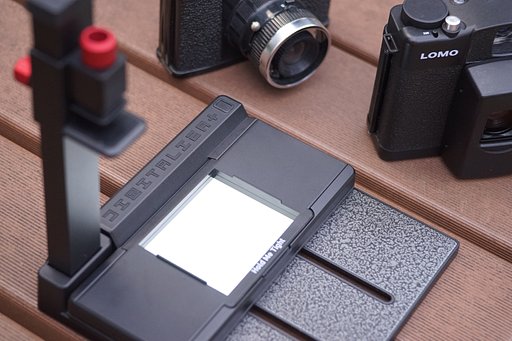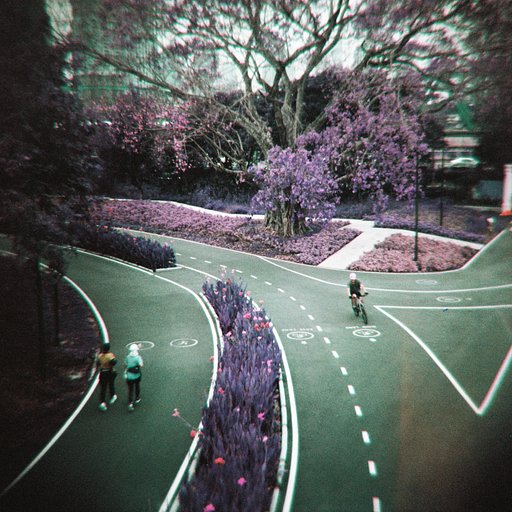Conversations and Connections–an Interview with Giovanni Lipari (NSFW)
29 Share TweetA lot can be said about an artist by examining their work. However, we do believe that you have to peel the layers one at a time to fully understand what they have to offer as there is so much more that can be left unnoticed and unseen. We had the chance to have a quick chat with photographer Giovanni Lipari to talk about his work and past projects. It was nice to see him creating more images that go beyond controversy. The beauty and substance Giovanni brings out in his images remain there as long as you're willing to look for them underneath the surface.
Hi, Giovanni and welcome to the Magazine! How did you get started with your photography journey?
I was born into a family that owned an event photography company, not to say my parents were photographers, they weren’t. However, I did have access and was around cameras from a very young age. So the tactile feel of a camera made it almost second nature for me. I don’t need light meters to know exposure, for example, I can just tell due to the time I spent with a camera in my hand.
High school was where I started shooting non-event photography and when I was 18, I moved to Paris and took some photography courses at Parsons School of Design’s Parian campus and decided that I would like to pursue cinematography as a career.
How is life during quarantine?
I think there have been different aspects of grieving that has happened during this time. At first, I was very stressed and felt a great deal of loss from the lack of instant gratification that one gets accustomed to during modern life in a city. So it was a great time of reflection on the purpose and understanding of the present.
How are you keeping busy?
Mostly just cooking.
Your work on "Death of Youth" seems like a turning point for your photographic work. How has your career changed after working on that series?
As far as career goes, I don’t think it’s really changed anything since I work in film and the series was shot under a pseudonym. However, I think that I developed a style, a POV, an approach, and really focused on how I want my images to look. Going from film to digital was a huge transition that I felt was very important. In my motion picture work, I was very early in all digital formats, but with stills, it took me a long time to find the right cameras, lenses, and post techniques to accomplish my goals.
What were the things you learned after taking those portraits?
If your subject is comfortable you will always get a genuine and honest photo. I’ve been on sets before where the photographer keeps themselves guarded and away from their talent. I don’t really understand that... I appreciate having a discussion with my subject and learning about them as we take images. This is especially important during nude shoots since your subject is really opening themselves and undressing their shell.
How is life after you reached that milestone?
It is difficult to say exactly… I would mostly say that I felt I was really learning photography during that time.
We love your portrait work. The photos look natural and unapologetic. How did you develop your shooting style?
It was a discovery over time. The first moment was when my brother (a professional photographer) bought a bunch used Olympus Stylist 70 Zoom Cameras. I shot a model with that camera and the images were just so amazing and nostalgic and that inspired me to create this project.
I continued to try new cameras (my Lomo camera was one of these!) as the project went on, with new film stocks, and eventually, I started experimenting with digital images as well.
The idea of memory is always present. There is a dream-like aesthetic that I know and feel very comfortable with creating and now I almost have a system to it.
I know that I prefer to shoot wider angle lenses and to be closer to the subject, that needed a long zoom or typical 85 mm portrait lens. I would say, for the most part, I don’t really like to shoot past a 35 mm lens, but I’ll throw on a 55 mm every now and then.
How do you keep a good working relationship with your models?
It’s a two-way street. I actually don’t know if I have great relationships with all the models I’ve shot however when I find someone I enjoy to work with, we typically have an amazing relationship and become friends. Someone to link up and shoot in a matter of minutes can create some really great images and I think that just comes from the trust that they have in me and allowing themselves to be present and in the moment.
Why choose film in your work?
It’s pretty much all digital now. I shot the first 100 women on film.
How would you describe your photographic work/career?
Fleeting
Do you have current projects that you're working on? Please share them with our readers.
I’m not really actively working on a project at the moment. I think for my next series, I’ll work with male subjects. I feel that so much of the beautiful photography available is done with female subjects and that I would love to photograph more men with the same beauty and dream-like state that I’ve accomplished with women in the past. And men are so gorgeous and amazing nude. I’m very excited to start this.
What's the first thing you will do when things get better outside?
The new male series. Travel to Europe. Oh, and go back to work!
Any words for your fans, critics, and followers?
Don’t post too many nudes on Instagram, you’ll lose your account, followers, and get shadowbanned like me! I miss Tumblr!
What does a perfect day look like for Giovanni Lipari?
For me, a perfect day includes hanging with friends and lots of Asado!
We would like to thank Giovanni for sharing with us his story. Follow him on Instagram and visit his site to see more of his work.
2020-07-06 #文化 #ニュース #people #portraits #giovanni-lipari #death-of-youth cheeo の記事





























コメントはまだありません